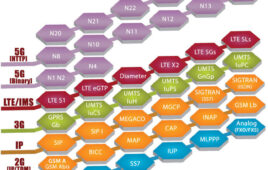Sprint made jaws drop earlier this week with the debut of a new promotion offering a full year of free unlimited service on up to five lines for bring-your-own-device switchers from its top rivals. While some analysts questioned Sprint’s motivation behind the move, others like Wells Fargo Senior Analyst Jennifer Fritzsche said there was a good “amount of logic” involved. Fritzsche said the limited scope of the offer would allow Sprint to use the promotion to test BYOD receptivity and new digital offers while improving churn and billing costs over the long term.
But these analyses overlook one key question – do customers actually want unlimited?
The knee-jerk answer to this question is yes. Wireless subscribers gobbled up unlimited after an initial backlash when T-Mobile shifted to a single, unlimited plan strategy. And subsequent unlimited moves from the other top three carriers have helped those providers reel in gains. In perhaps the most notable example, Verizon was able to salvage postpaid phone net additions after its debut of unlimited in February – pulling those figures from 398,000 in the red to 109,000 in the black in the first quarter.
And indeed, there appeared to be a clamoring among consumers for unlimited, with several carriers reporting it was one of the most requested items among subscribers.
But some of the comments from the T-Mobile pushback taken alongside a new survey from MATRIXX Software suggest that maybe what some customers really want is not unlimited per say, but just more control over their data.
In a May survey of more than 2,200 U.S. smartphone users between the ages of 18 and 70, MATRIXX found 58 percent of all mobile users – including those on unlimited plans – would change their mobile service immediately if they could have more choice and control over how they use their data. Additionally, respondents said if they could choose the best plan to meet their needs in the moment, more than 50 percent would change their data plan at least once a month – some as frequently as every day. Nearly half of respondents said they would pay as much as 10 percent more for unrestricted access (i.e., no throttling or extra costs for higher quality) to apps they use the most, including Netflix, Spotify, and Facebook.
Notably, all respondents wanted the ability to choose what to do with their unused data, with suggestions ranging from donating it to charity, gifting it to a friend, or receiving it back in rollover or monetary credit.
Unlimited gives customers the freedom to surf without worrying about hitting data limits, but seems to fall short in the area of control over how that data is used. And that raises the debate of whether control is a carrier question so much as it is a content question.
There are some options out there – like Comptel’s FWD app – that let customers control their data based on time spent rather than GB used. But in the traditional carrier world, the real way to give customers control over their data is by letting them control ads.
Last year a study from Enders Analysis found ad content can account for nearly 80 percent of data used on mobile devices. While some international carriers like EE and Digicel have announced plans to block ads for their customers at the network level, stateside carriers are increasingly becoming ad machines themselves. And with ARPU falling, it’s unlikely U.S. carriers will cede the controls to customers with revenue on the line.




